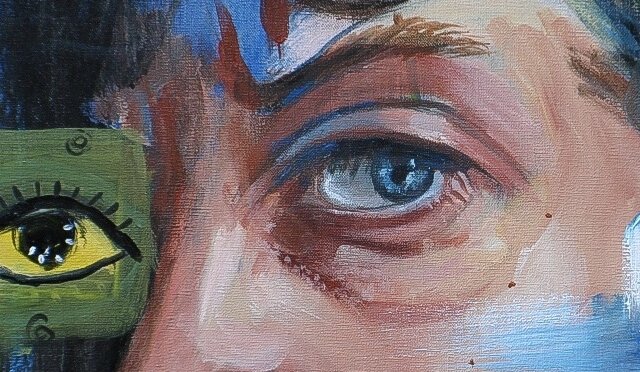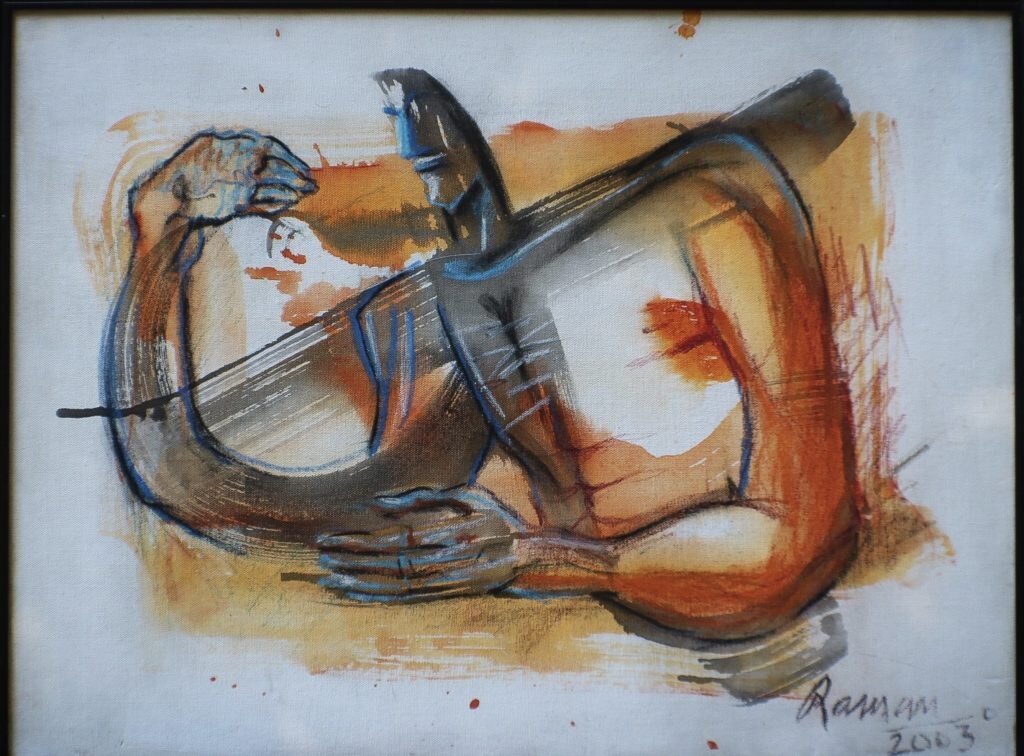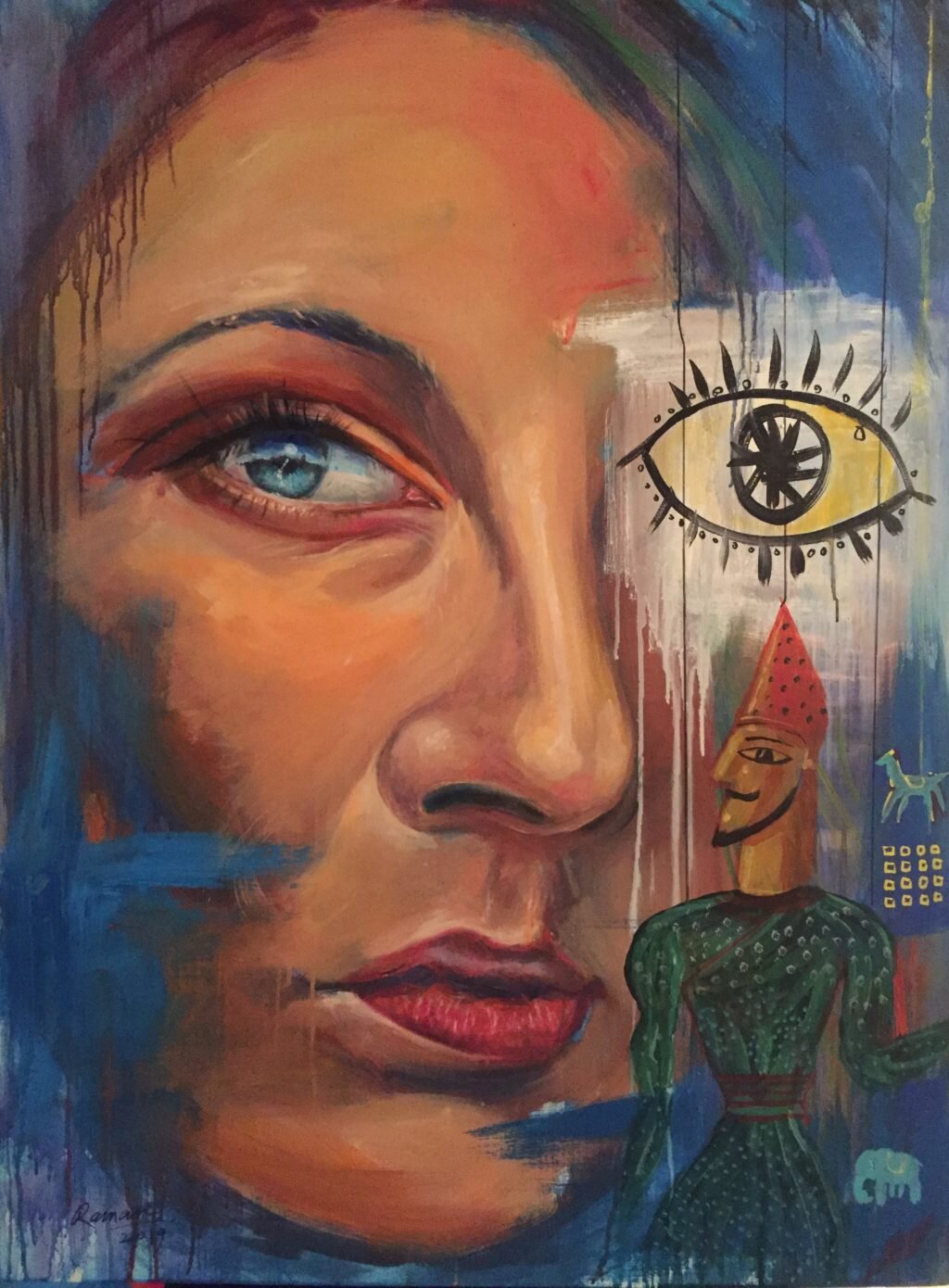Artist Feature: Raman Bhardwaj
“The stretching of a life from one end of the globe to another.”
From the artist:
Raman Bhardwaj’s figurative art has always been influenced by his fascination with the myths and mythical characters from a blend of cultures. The stories that drew him in most are about characters who are as emotional as humans but powerful like Gods. His strong interest in Indian myths, ancient texts, and astrology, directed his approach towards life and art. Raman’s early artworks realistically represent some mythical characters in acts of bravery, with the desire to inspire both himself and the viewer to fight the odds, to be brave, to do the karma. Rather than paint the characters like their traditional depictions, Raman adds symbolic shapes like circles, wheels, triangles, and arrows, to represent cycles of life, spirituality, and Karma (efforts).
After transplanting to America in 2018, Raman Bhardwaj’s art underwent significant change. His early work had mostly been powerful athletic figures portrayed with Asian (bold lines) and Western (modeling and shading) techniques with a focus on the grace of the body. Now he has begun stylizing and elongating the figures, diverging from the strictness of anatomy. While before his palette had contained mostly warm colors, now it started including cool, contrasting colors. A contrast of two worlds, polarities, and cultures- an effect the artist attributes to the stretching of a life from one end of the globe to the other. Raman’s identity dissolved and resurfaced with new cultural influences and challenges, inspiring him to focus on the subject of illusions through a mix of realistic and stylized depictions of figures and faces.
Raman Bhardwaj’s current project is about myths and Maya (sanskrit word for illusion). Maya is a feminine word and is also represented as a beautiful enchantress in many Indian myths, thus the new series of drawings and paintings heavily features female faces and figures. Ancient Indian texts alluded human life force as “Maya” and that all humans are fascinated by the charm of “Maya”- life. To capture this, the artist paints people floating in a dreamland, in an illusory world. Elongated curved necks and limbs bending as if boneless bring the flow of movement to the figures. At times Indian puppets are included, both as a piece of Raman’s cultural identity and as a symbol of humans being ruled by society and destiny at large. Raman also paints beautiful saddened faces; the painting titled “The Scarred Queen” depicts a friend of Raman’s who battled breast cancer, underwent multiple surgeries, continues to struggle and rise above the sea of medical issues, mental challenges, and social loneliness. The series of portraits with a jarring abstract eye represents the effect of illusion on life. At times Indian puppets are included, both as a piece of Raman’s cultural identity and as a symbol of humans being ruled by society and destiny at large. Through playing with his ascetic in these faces he questions what is real and unreal.
The characters, the faces, and the figures, help the artist tell the stories and emotions he feels are necessary to convey. When the viewer looks at Raman’s art they relate to the characters- their struggles and playfulness- no matter which country or time the works are viewed.
+++
Raman Bhardwaj is an Indian descended, Greensboro based painter, muralist, illustrator, sculptor, and designer. Born and raised in India, he won a national award in India for illustrations, and has won ArtPop street gallery award 2019 for billboard art in USA. He is a laid back homeopathy and astrology enthusiast who listens to Indian classical music and cooks chicken soup for his soul almost every day.
www.artistraman.com
instagram: @artistraman
facebook: @pureartguru














